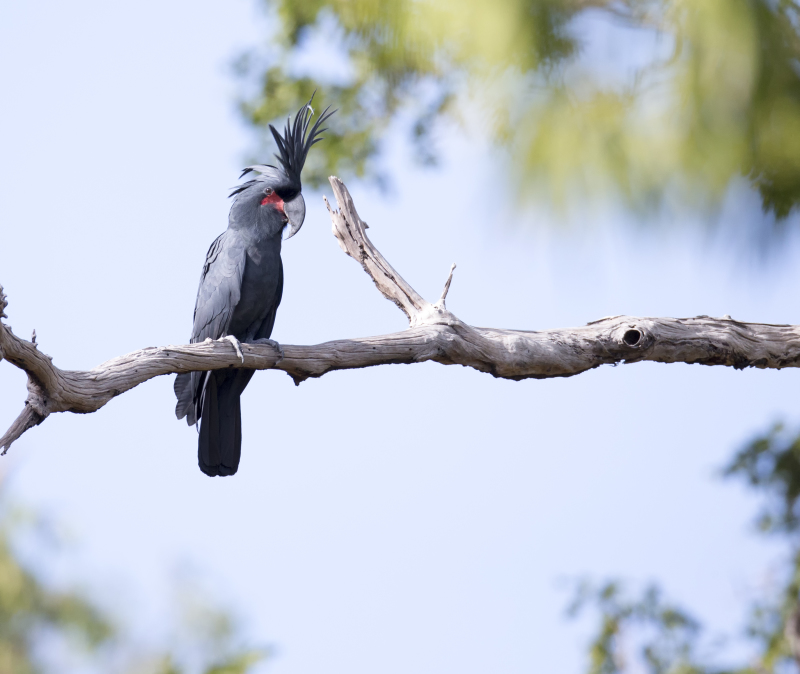Colours
Distinguishing features
It is a distinctive bird with a large crest and has one of the largest bills of any parrots. This powerful bill enables Palm Cockatoos not only to eat very hard nuts and seeds, but it also enables males to break off thick (~1") sticks from live trees to use for a drumming display. The bill is unusual as the lower and upper mandibles do not meet for much of its length, allowing the tongue to hold a nut against the top mandible while the lower mandible works to open it. The Palm Cockatoo also has a distinctive red cheek patch that changes colour when the bird is alarmed or excited. (Wikipedia)
Size
- From 55 cm to 60 cm (Length of specimen)
Wingspan
- From 70 cm to 100 cm
Synonyms
Interesting facts
- It has a unique territorial display where the male bird drums with a stick or seed-pod against a dead bough or tree, creating a loud noise that can be heard up to 100 m away. The purpose of this drumming behaviour remains a mystery. (Wikipedia)
Distribution
Distribution and habitat preferences
The Palm Cockatoo is distributed in rainforests and woodlands of New Guinea island in Indonesia and Papua New Guinea, and far northern Queensland, Australia. (Wikipedia)
Local abundance
- Sorong, West Papua, Indonesia: It can among the trees along the road.
Behaviour
Usually only one to six individuals will be observed feeding together at one time. As with other large birds both parents care for young so seeing a breeding pair is not unusual. If these birds do congregate it will usually happen in open woodland just after sunrise or along the rainforest edge before returning to individual roost for the night.
Diet
It often observed feeding during the early hours of the day on a diet that consists mostly of wild growing Pandanus Palm fruit and nuts from the Kanari tree (Canarium australasicum). They have also been seen eating fruit from Darwin Stringybark (Eucalyptus tetrodonta) and Nonda tree as well as seeds from the Cocky apple tree, Beach almond and Black Bean tree. (Wikipedia)




